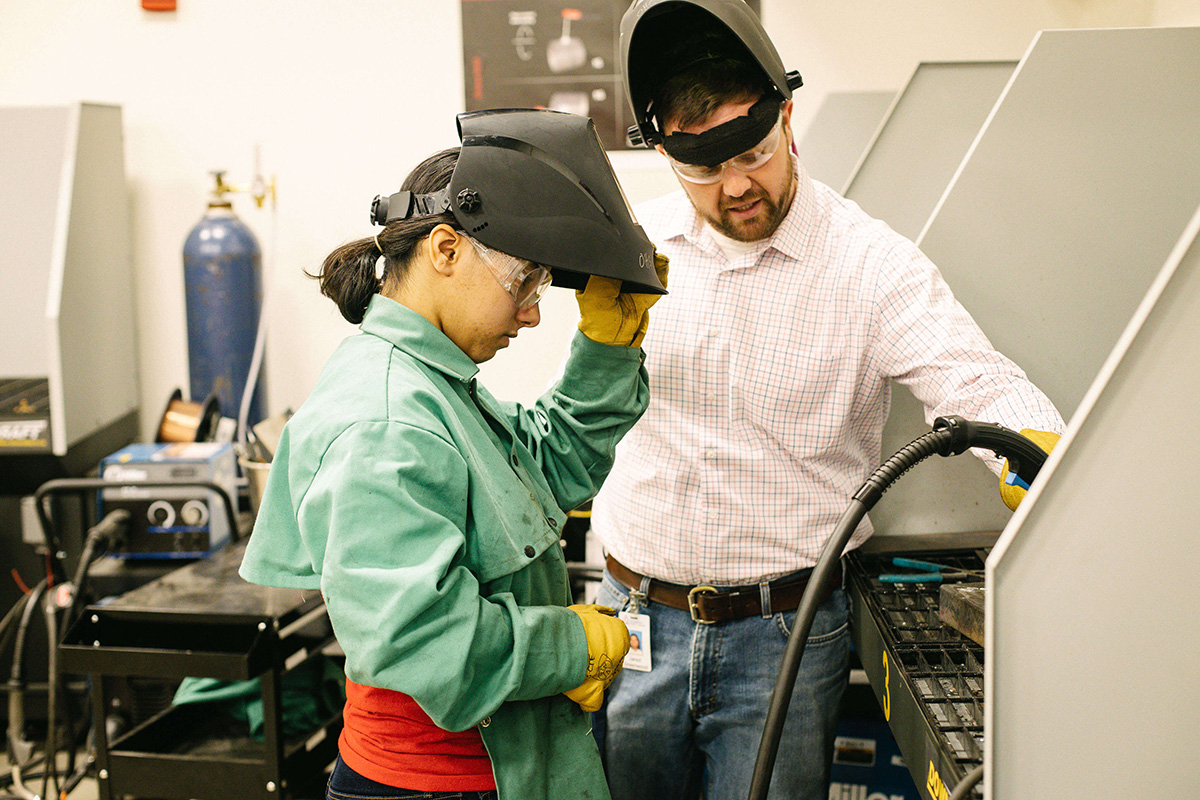
Note: The following op-ed was originally published by the Bellingham Herald.
As high school students across Bellingham look ahead to the coming school year, some are undoubtedly thinking about what comes after graduation. Will they be ready for work? College? Apprenticeships? As educators, we hope that not only will they graduate with a meaningful diploma, they will leave having had opportunities to explore their career interests and develop real-world skills. That’s what we are about at Options High School.
Every day, students, along with some classmates from Bellingham’s three comprehensive high schools, come to Options to pursue specialized programs for their individual career interests. They’re developing skills that will give them an advantage when they pursue work, postsecondary education, and training. The students I have in class come specifically for instruction in aerospace manufacturing.
I use the Core Plus Aerospace high school manufacturing curriculum, which was developed and supported by Boeing. Through it, students can earn career and technical education, or CTE, math, science, and/or elective credits. The first year of Core Plus Aerospace coursework focuses on fundamentals common to all manufacturing industries, such as precision measurement and materials science. As they progress, students dive deeper into aerospace-specific skills. They learn about aerodynamics, astronautics, space-life sciences, and systems engineering. They get instruction in machine operations, production line operations, engineering analysis, and computer-aided manufacturing.
The coursework takes students out of the traditional classroom setting – and potentially out of their comfort zones – and encourages them to grow academically and personally. They can draft projects on a computer and make those projects come to life using the same machines they would see working in industry.
Through 21st century career and technical education, my students are developing fluency in core math and science concepts, exploring career interests and taking steps toward realizing their life aspirations. They are learning skills like teamwork, accountability and time management.
One of my former students from Squalicum High School, plans to use the skills gained to pursue an apprenticeship and gain one-on-one experience as an electrician. Another student, a recent graduate from Bellingham High School, discovered her love for welding in my class, a skill she plans to pursue at a technical college. And still another, a current student at Bellingham High School, has dreams that she will become a NASA engineer.
These students will enter a workforce in Bellingham and Washington state that needs workers with the STEM and manufacturing skills we’re working on every day. A large share of Washington’s nearly 300,000-person manufacturing workforce will soon retire. The door is open to the next generation—I want my students to be ready.
My students have a direct internship pathway with local businesses. They have opportunities to interview for manufacturing jobs at employers, like Boeing, who will pay for college. They have a foundation from which to pursue apprenticeships and aligned certificates and degrees.
I am so proud of my students, the goals they’ve set, and the progress they’ve made. I would encourage other students and families to explore CTE courses at all the Bellingham high schools. Whatever pathway a student chooses, they should have opportunities in high school to explore their interests and develop the real-world skills that employers are demanding.
Jared Greenwood is a Career and Technical Education teacher at Options High School. The Bellingham Public Schools website says Options is a small accredited school of choice that supports students as they develop their passions, learn at high levels and plan for a wide range of educational and vocational opportunities beyond high school.

